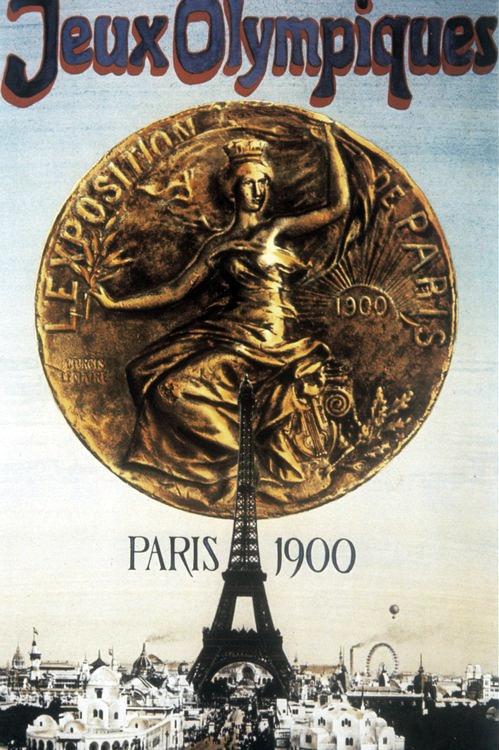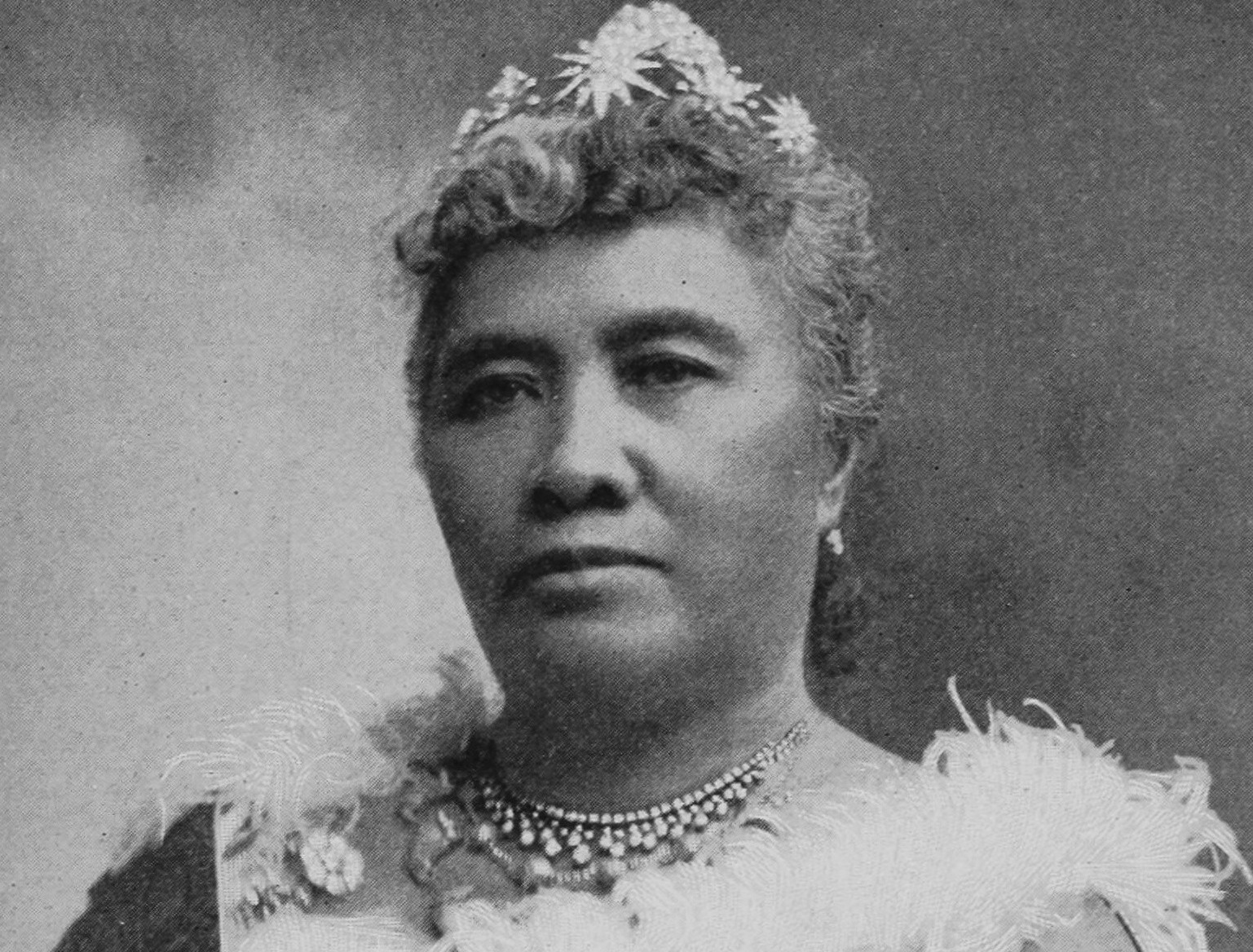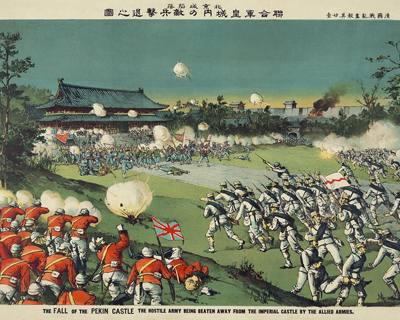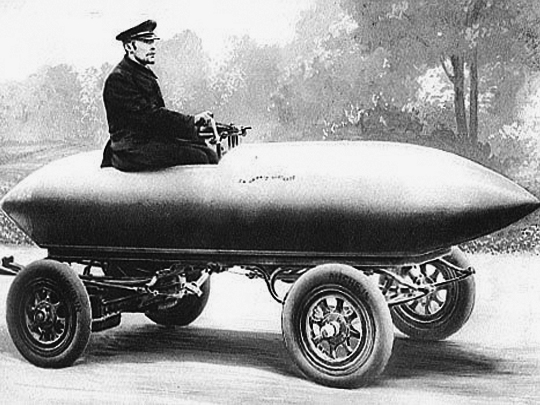Wikimedia Commons / CC-BY-SA-3.0 / GFDL
1 – Golden Age for Electric Cars
As the mode of transport changed from the horse-drawn carriage to the automobile, the market was shared by steam, electric and gasoline-powered cars.
Prior to the gasoline-powered car taking a stranglehold of the industry for the next century, this was the early golden age for electric cars, with an estimated 30,000 in use at the turn of the 20th century.
In London and New York, the majority of taxis were electric battery-powered at this time, with them being nicknamed ‘Hummingbirds’ due to the humming noise they made.
The land speed record in 1900 was held by Belgian Camille Jenatzy, at a top speed of 65.792mph/105.882km/h.
The record was set by an electric-powered car, ‘La Jamais Contente’, the first car to reach 100km/h.
2 – The Second Modern Olympics were held in Paris (First Games with Women Contestants)

1900 Olympics. Wikimedia Commons / CC-BY-SA-3.0 / GFDL
These games suffered from being a sideshow to the ‘World’s Fair’. The games lacked organization and promotion to such an extent that some athletes did not know they had competed in the Olympic games.
24 nations, with 997 competitors, participated in 95 events, though these figures are disputed by some historians.
Sailor Hélene de Pourtales became the first female medalist in an Olympics, while British tennis player Charlotte Cooper was the first individual female champion at an Olympic games.
The games did not have an opening or closing ceremony and lasted 168 days, from May 14th until October 28th.
The events rarely used the term “Olympic” and even the official report of the games was titled “Concours Internationaux d’exercices physiques et de sport” (“International physical exercises and sports”).
Curiously, there were no gold medals awarded to the winners, with silver given to the winners and bronze to second place. The games were also the only games in history to have used pigeons as targets during the shooting event.
3 – Hawaii became a US territory

Queen Liliʻuokalani, the last monarch of the Kingdom of Hawaii, was overthrown in 1893 following a coup, supported by the American and European business class living in Hawaii.
US marines stormed the islands to aid the coup, without presidential approval and forced the Queen to abdicate.
Due to opposition from newly elected, and anti-imperialist, President Grover Cleveland, an investigation was launched into the overthrow. The matter was not resolved until Cleveland left office.
President William McKinley signed a joint resolution, officially annexing Hawaii in 1898. In 1900, US Congress agreed to grant Hawaii a popularly elected government of its own, known as the Hawaiian Organic Act of 1900.
Hawaii would not become a state until 1959, following failed bids in 1935 and 1937.
Their calls for statehood gained much larger support following World War II, largely due to Pearl Harbour suffering the first American blow of the war and Hawaiians proving their loyalty to the cause on the front-lines during the war.
In 1993, US Congress passed The Apology Resolution, signed by President Clinton, offering an apology to native Hawaiians for the US involvement in the overthrow of the Hawaiian Kingdom.
4 – The Boxer Rebellion

A secret Chinese organization called ‘The Society of the Righteous and Harmonious Fists’ led an anti-imperialist uprising in Northern China in response to foreign encroachment upon China’s national affairs.
The Boxers (nicknamed due to performing physical exercises they believed would make them able to withstand bullets) converged on Beijing in June 1900 and laid siege to the foreign legation district for the next two months.
The Eight-Nation Alliance (of Western powers) brought 20,000 troops to quash the rebellion and, on August 14, lifted the siege.
All those suspected of being Boxers were executed in the days following the siege. Hostilities officially ended in September 1901 with the signing of a protocol, providing for reparations to be made to Western powers.
Estimates of casualties vary greatly, though they are thought to exceed 100,000, with the vast majority being civilians, many thousands of which were Chinese Christians.
5 – Kodak introduces the Brownie camera
The camera made photography accessible to the masses. The Brownie was designed and priced ($1) to have as large an appeal as possible.
In adverts, the Brownie was marketed towards children and claimed the camera was “so simple they can easily be operated by any schoolboy or girl”.
The Brownie was a low-priced, point-and-shoot hand-held camera and allowed everyone the chance to capture their treasured moments.
The result was that the Eastman Kodak Company sold over 250,000 Brownies within the first year. It was a game-changer for the future of photography.










